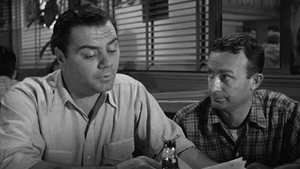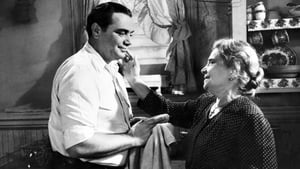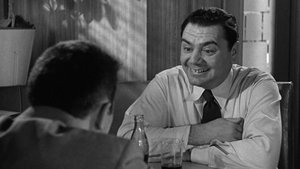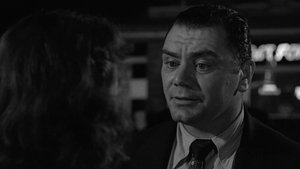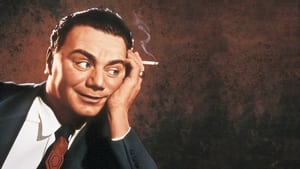Video Sources 0 Views
- Watch trailer
- Marty

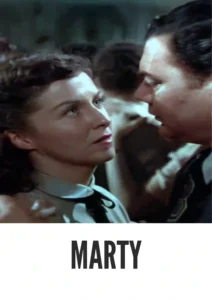
Synopsis
Table of Contents
Toggle
Step back into 1950s New York with Marty, a poignant and heartwarming romantic drama from 1955, now presented in stunning color. Starring Ernest Borgnine in an Academy Award-winning performance, this film tells the simple yet profound story of an ordinary man’s search for love and connection. Perfect for those who appreciate character-driven narratives and timeless stories of the human condition, this HD download offers a fresh perspective on a beloved classic.
Marty follows the life of Marty Piletti (Ernest Borgnine), a kind-hearted but lonely butcher living in the Bronx. Tired of his mother’s nagging and the constant remarks about his bachelor status, Marty yearns to find someone to share his life with. One Saturday night, he reluctantly agrees to go to the Stardust Ballroom, a local dance hall.
There, he meets Clara (Betsy Blair), a schoolteacher who is also having a difficult time finding companionship. Both feeling like outsiders, Marty and Clara connect on a deeper level, finding solace and understanding in each other’s company. Their budding romance faces obstacles, including pressure from Marty’s family and friends, who disapprove of Clara. However, Marty must decide whether to succumb to the expectations of others or to follow his heart and embrace the possibility of true love. Marty is a touching and relatable story about overcoming loneliness, defying societal norms, and finding happiness in the most unexpected places.
The film features remarkable performances from its lead actors:
-
Ernest Borgnine as Marty Piletti
-
Betsy Blair as Clara Snyder
-
Esther Minciotti as Marty’s Mother
-
Augustus Ciolli as Uncle Dominic
-
Joe Mantell as Angie
Marty transcends typical genre classifications, blending elements of romantic drama and slice-of-life storytelling. Its realistic portrayal of everyday people and their struggles makes it a deeply resonant and emotionally satisfying film.
Originally a television play written by Paddy Chayefsky, Marty was adapted into a feature film in 1955, directed by Delbert Mann. The film’s success marked a significant moment in the history of American cinema, demonstrating the potential of television dramas to reach a wider audience. Marty won numerous awards, including the Academy Award for Best Picture, Best Director, Best Actor (Ernest Borgnine), and Best Adapted Screenplay, solidifying its place as a landmark achievement in both television and film.
This colorized version of Marty has been meticulously crafted to enhance the viewing experience for modern audiences while preserving the film’s original charm and emotional depth. The colorization process involved careful consideration of the film’s setting, characters, and themes, ensuring that the colors accurately reflect the atmosphere and tone of the story. Advanced digital techniques were employed to add depth and vibrancy to the visuals, bringing new life to the performances and locations. While respecting the artistic integrity of the original black and white film, this colorized version offers a fresh and engaging way to experience the timeless story of Marty.
-
: Delbert Mann
-
: Paddy Chayefsky
-
: Joseph LaShelle
-
: Alan Crosland Jr.
-
: Hecht-Lancaster Productions
-
: United Artists
-
: 90 minutes
-
: MP4
-
: HD (1080p)
-
: Compatible with most devices, including smartphones, tablets, computers, and smart TVs.
Marty (1955) is widely regarded as a masterpiece of American cinema, celebrated for its realistic portrayal of working-class life and its heartfelt exploration of human relationships. Ernest Borgnine’s performance as Marty Piletti is considered one of the greatest in film history, and the film’s themes of loneliness, acceptance, and the search for love continue to resonate with audiences today. With its authentic characters, simple yet powerful story, and enduring message, Marty remains a timeless classic that deserves to be seen and appreciated by generations to come.
-
: What is Marty about?
-
A: Marty is a romantic drama about a lonely butcher from the Bronx who finds love with a schoolteacher.
-
-
: What awards did Marty win?
-
A: Marty won the Academy Award for Best Picture, Best Director, Best Actor (Ernest Borgnine), and Best Adapted Screenplay.
-
-
: Is this version of Marty colorized?
-
A: Yes, this version has been professionally colorized to enhance the viewing experience.
-
-
: What makes Marty a classic film?
-
A: Marty is a classic film because of its realistic portrayal of working-class life, its heartfelt story, and its timeless themes.
-
-
: What is the download format?
-
A: The download format is MP4, which is compatible with most devices.
-
-
: What resolution is the download?
-
A: The resolution is HD (1080p), providing a high-quality viewing experience.
-
Watch Marty Today!
